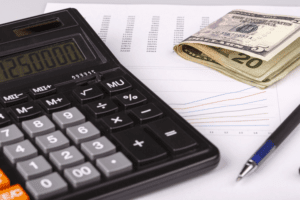
If you have pre-printed deposit slips from the back of your checkbook, this is already done for you. Learning how to deposit a check is a valuable life skill — you might even say it pays to know how! The process typically involves ensuring the check is valid, confirming its accuracy, endorsing it and choosing a deposit method that suits you. Keep these basic steps in mind and, soon enough, they’re likely to become second nature. Depending on your bank, you may or may not have to fill out a deposit slip. If you are depositing three or fewer checks, enter the amount of each check on a separate line.
BELOW ARE SOME IMAGES FOR THE ABSA BANK DEPOSIT SLIP
Other banks require that you put everything in an envelope and fill out a deposit slip, which an employee will use to manually record your deposit. On the reverse side of each check, write “For Deposit Only” if you are not getting any cash back, and sign your name. You can write your bank account number below your signature, although banks typically don’t require this. If you want to receive cash back, omit the phrase “For Deposit Only.”
About Chase

The routing number on a deposit slip can be easily located at the bottom of the slip. Typically, this nine-digit number is printed near the left-hand corner, either at the bottom or slightly above the magnetic ink character recognition (MICR) line. Banks play an essential role in the business sector for money transactions. The bank issues a document that contains the necessary information about the service that banks provide, which serves as proof of their service. If you make a remote deposit using your mobile device, you probably won’t need to complete a deposit slip.
Supercharge your skills with Premium Templates
Deposit slips can also be called deposit tickets and depending on the bank, their when must you sign a deposit slip? designs may differ. This can save potential complications and delays in processing your funds. Your bank sets rules, known as the funds availability policy, which explain how long you need to wait before spending money from a deposit. In some cases, you can take up to $225 in cash from a personal check on the first business day. This process helps ensure accuracy and accountability, making it easier to track your financial activities.

- This helps banks make sure that there are no funds left unaccounted for.
- Moreover, it serves as proof that the bank has acknowledged the funds’ receipt, ensuring accuracy and transparency in the deposit process.
- Connect with a Chase Private Client Banker at your nearest Chase branch to learn about eligibility requirements and all available benefits.
- Even though these modern advancements may diminish the necessity for deposit slips, understanding their significance remains vital.
- If any withdrawals are being made from the checks (common for check deposits into own accounts), they are subtracted from the sub-total to obtain the total deposit.
A Deposit Slip is a document that is used by bank clients to deposit funds, such as cash or checks into their bank accounts. A bank establishes a blank Deposit Slip and provides it to its customers to complete for documenting the items in a deposit transaction. Deposit slips remain an essential part of the bank deposit process despite the increasing prevalence of technology in banking. While they provide numerous benefits, they Cash Flow Management for Small Businesses also present certain risks related to information theft and fraud.
Endorse Each Check

Deposit slips are essential forms used by bank customers when depositing money into their accounts. These slips include crucial details like the deposit date, depositor’s name, account number, and the amounts CARES Act being deposited, whether in the form of cash or checks. Customers can find these slips at bank branches and are required to fill them out before approaching the teller. Deposit slips ensure accuracy in crediting funds to the correct account and serve as proof of the transaction.
- It helps the bank maintain a ledger of the deposited funds, allowing it to ensure that no deposited funds are unaccounted for.
- There’s space for you to enter the check number next to the dollar amount of each check, which helps you and your bank keep track of each item.
- For banks, deposit slips are used to keep a record of the funds deposited on a day-to-day basis.
- The routing number on a deposit slip can be easily located at the bottom of the slip.
- Overall, deposit slips play a vital role in maintaining transparency, accuracy, and trust in banking transactions for both parties involved.
- If you’re depositing numerous items at once, use the back of your deposit slip or ask a bank employee for guidance.
- Also, learn about the common tricks scammers are using to help you stay one step ahead of them.
- In cases where the funds are not yet reflected in the intended account, the bank can request the deposit slip to verify certain information, such as the account number, etc.
- A deposit slip should include your name, account number, the deposit date, details of cash and checks being deposited, and your signature for authorization.
- In many cases, you can take up to $200 in cash from a personal check within one business day.
- As an additional precaution, many financial institutions advise customers against mailing checks payable to cash.
- Depositing a check at an ATM typically involves inserting your debit card, entering your PIN and following the on-screen instructions.
Other banks require that you put everything in an envelope and fill out a deposit slip, which a bank employee will use to record your deposit manually. If you’re depositing numerous items at once, use the back of your deposit slip or ask a bank employee for guidance. Most deposit slips have an extra set of boxes printed on the back so that you don’t have to fill in your personal information multiple times and deal with multiple subtotals.
